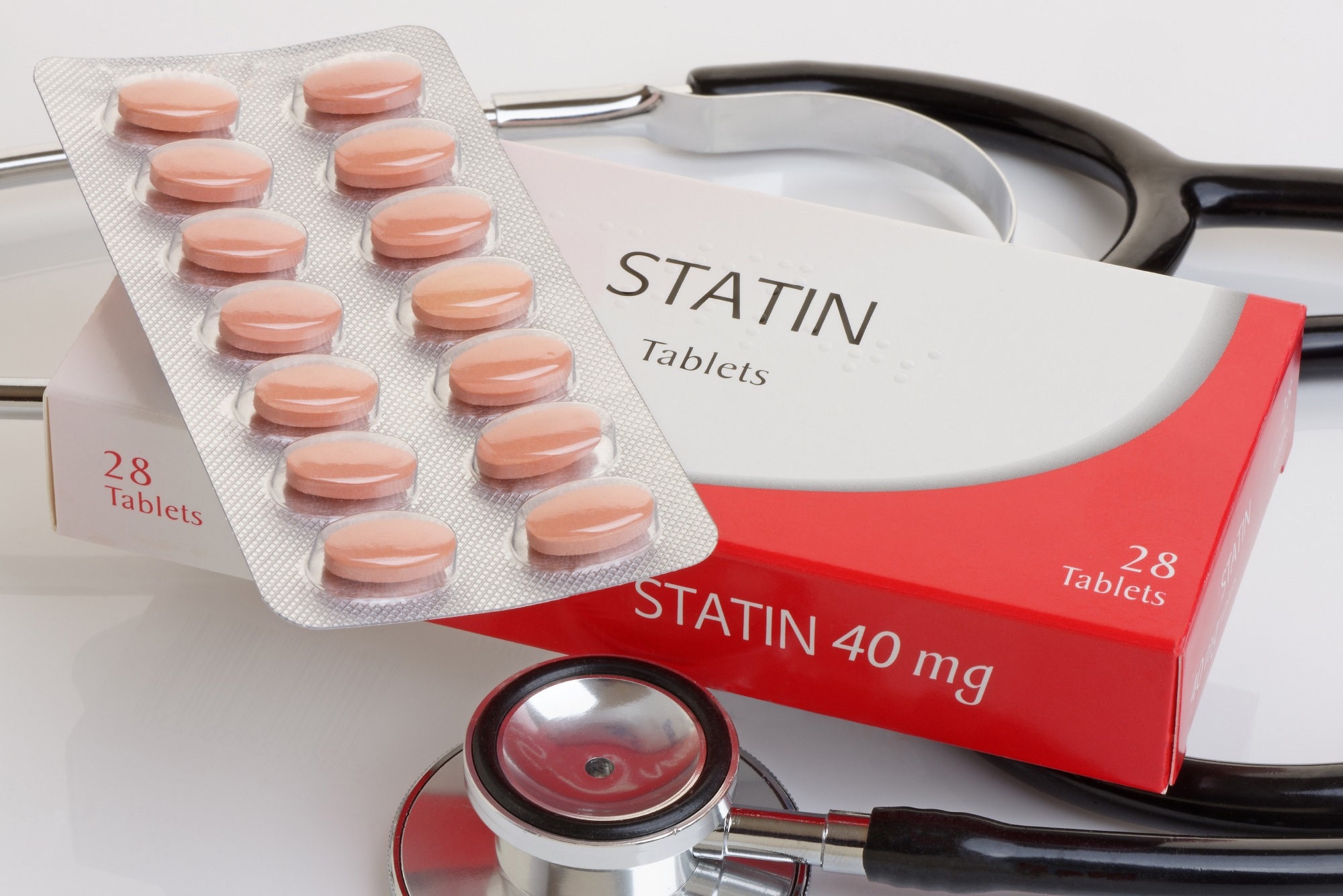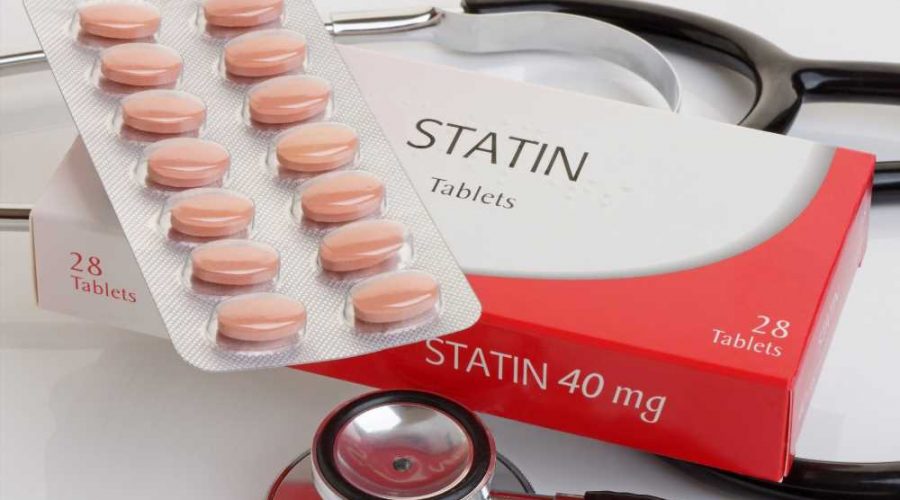Exploring the muscle symptoms associated with statin therapy
In a recent study published in The Lancet journal, investigators explored the influences of statin treatment on muscle symptoms.

Background
About 18 million people died globally in 2019 from atherosclerotic cardiovascular illnesses, including ischemic stroke and myocardial infarction, and low-density lipoprotein (LDL) cholesterol is a significant risk factor. A 3-hydroxy-3-methylglutaryl-coenzyme A reductase (HMG-CoA) inhibitor, i.e., statin, can lower LDL cholesterol levels in the long term, and randomized controlled studies have shown that for every one mmol/L reduction in LDL cholesterol, the risk of myocardial infarction and ischemic stroke is reduced by about 25%. As a result, statins are administered today by millions of individuals worldwide.
Although statin therapy is prescribed widely and successfully prevents atherosclerotic cardiovascular disease, there are ongoing concerns that it could frequently result in muscle weakness or pain. Therefore, a reliable evaluation of how distinct statin regimens affect muscle symptoms under various clinical scenarios is required.
About the study
In the current work, the researchers used an individual subject information meta-analysis of every adverse muscle symptom in long-term, extensive, randomized, double-blind experiments of statin therapy to investigate whether statins cause muscle weakness or pain. The present meta-analysis sought to examine how any additional risks changed over time among various types of people and for distinct statin regimens and the impact of statin medication on muscle impacts of varying severity.
The study included randomized trials on statin therapy with a minimum enrollment goal of 1000 volunteers and a minimum two-year treatment duration scheduled. Moreover, the eligible investigations ought to compare statins to placebo or a more rigorous statin regimen to a less rigorous one in a double-blind fashion.
The team examined 123,940 individual subject data from 19 double-blind studies comparing statin therapy to placebo treatment and 30,724 from four double-blind studies comparing a more intensive statin therapy to a less rigorous regimen. In addition, conventional inverse-variance-weighted meta-analyses of the impacts on muscle outcomes were performed following a predetermined protocol.
Results
The study results demonstrated that of the 19 placebo-controlled studies comprising subjects of a mean age of 63 years, 27·9% (34,533) were women, 48·1% (59,610) volunteers with prior vascular illness, and 18·5% (22,925) volunteers with diabetes. Furthermore, among these participants, 27·1% (16,835) from statin and 26·6% (16,446) from placebo groups reported muscle weakness or pain in a 4·3 years weighted average median follow-up.
The authors found that during the first year of statin therapy, there was a 7% relative hike in muscle pain or weakness. These values translated into an 11 absolute surplus rate, ranging from six to 16 incidences per 1000 person-years. This inference shows that just one in 15 of these muscle-associated reports by subjects assigned to statin therapy was induced actually by the statin. Notably, there was no appreciable increase in the initial reports of muscle weakness or pain after a year.
More intense statin regimens produced a higher relative risk (RR) than moderate-intensity or less intensive regimens relative to placebo for all years united. The more intensive statin treatment included atorvastatin 40 to 80 mg or rosuvastatin 20 to 40 mg once/day. Additionally, a modest RR excess was observed for more intense regimens after the initial year.
There was no conclusive proof that the RR varied for various statins or under different clinical conditions. Besides, the median creatine kinase levels increased by a negligible amount (around 0.02 times the higher limit of normal) following statin medication.
Conclusions
The study findings showed that statin therapy resulted in a small overabundance of mainly mild muscle pain. More than 90% of subjects on statin therapy reported no muscle symptoms that could be attributable to the statin. The authors pointed out that the proven cardiovascular advantages much outweigh the minor risks of muscular complaints of statins. Further, they mentioned the necessity to evaluate the clinical management of patients on statins experiencing muscle symptoms.
The team minimized biases by limiting the assessments to statin therapy compared to placebo in randomized, large-scale, double-blind studies with unbiased and systematic event reporting. They collected information on all adverse events linked to the muscle documented in each study subject. Moreover, the scientists coded them utilizing general nosological standards to combat potential biases from the included publication results.
In addition, the researchers stated that the accessibility of individual subject data made it possible to conduct more thorough risk evaluations for statins separately than were earlier feasible. These evaluations included those examining the timing of any additional risk, the variance in treatment impacts, and the implications on specific symptoms in various patient types.
- Blazing M, Braunwald E, de Lemos J, Murphy S, Pedersen T, Pfeffer M, et al. (2022). Effect of statin therapy on muscle symptoms: An individual participant data meta-analysis of large-scale, randomised, double-blind trials. The Lancet. doi: https://doi.org/10.1016/S0140-6736(22)01545-8 https://www.thelancet.com/journals/lancet/article/PIIS0140-6736(22)01545-8/fulltext
Posted in: Medical Science News | Medical Research News | Healthcare News
Tags: Atorvastatin, Cardiovascular Disease, Cholesterol, Creatine, Diabetes, Ischemic Stroke, Kinase, Lipoprotein, Muscle, Myocardial Infarction, Pain, Placebo, Rosuvastatin, Statin, Stroke, Vascular

Written by
Shanet Susan Alex
Shanet Susan Alex, a medical writer, based in Kerala, India, is a Doctor of Pharmacy graduate from Kerala University of Health Sciences. Her academic background is in clinical pharmacy and research, and she is passionate about medical writing. Shanet has published papers in the International Journal of Medical Science and Current Research (IJMSCR), the International Journal of Pharmacy (IJP), and the International Journal of Medical Science and Applied Research (IJMSAR). Apart from work, she enjoys listening to music and watching movies.
Source: Read Full Article
